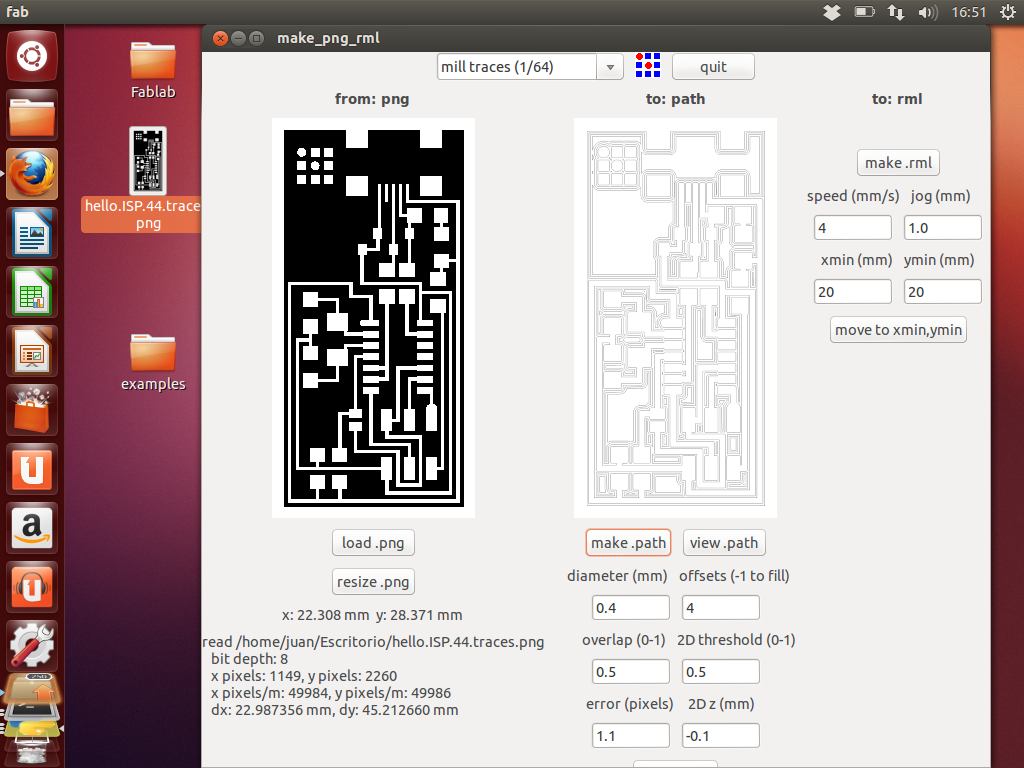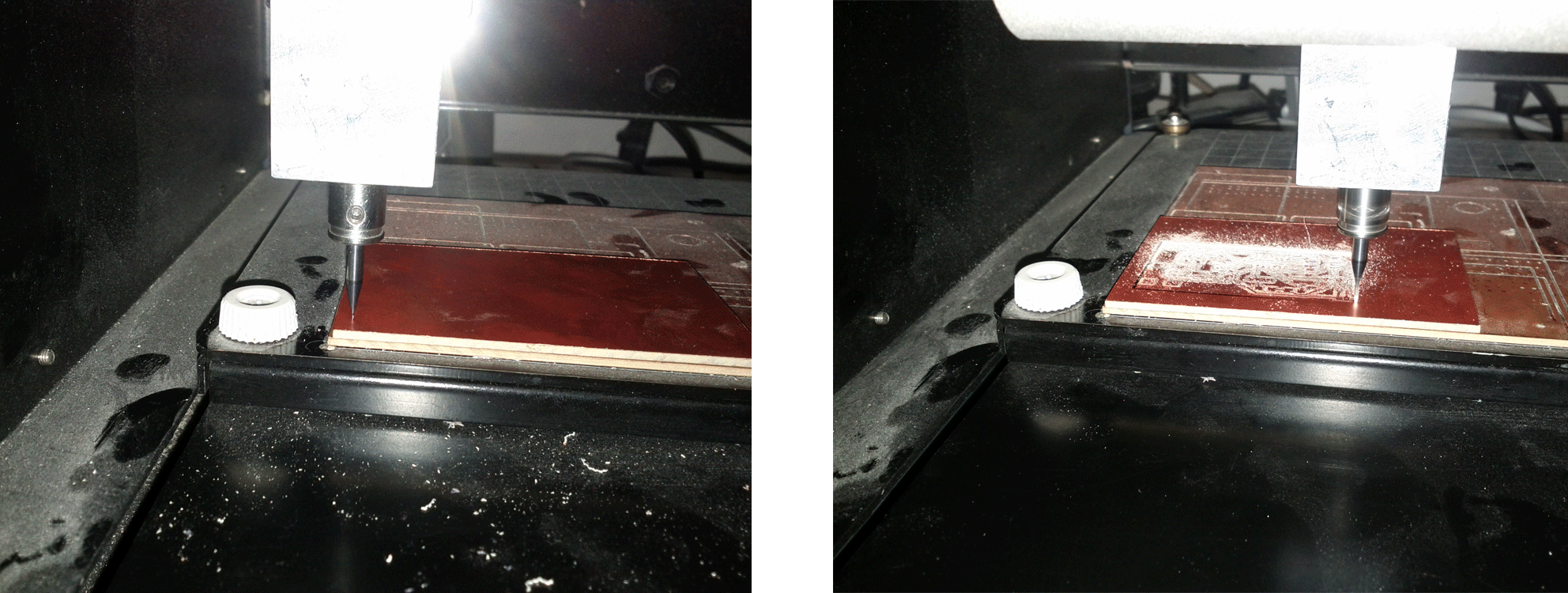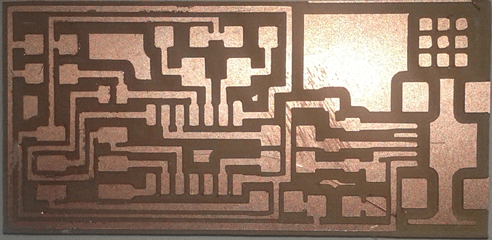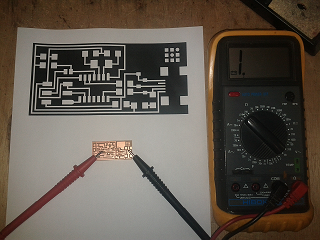Juan Ranera
Fab Academy 2013 Participant
Electronics production
This week we have fabricated the first PCB board. The FabIsp programmer to AVR microcontrollers . A simple circuit formed by ATTINY44 with a 20MHz crystal, a mini USB connector, 6-pin ISP connector and several passive components.
I did my first circuit a few years ago using the traditional method of ultraviolet light and chemical attack. I even fabricated my own exposure unit. Now in my job I usually send the designs to be manufactured. I had never used a milling machine before.
Making the board
The first thing I did was read the tutorials "How to Assemble and Program the FabISP" and "How to make circuits on the Modela milling machine (fab modules)" .Then I downloaded the proposed designs on the website as "hello.ISP.44": interior.png , traces.png and board . I started the "Fabmodules" to set up printing with the milling machine "Modela".
Next, I hold the copper plate with adhesive tape, I chose the 0.4 mm drill and placed the bit at the origin. After that I sent the order to print the tracks.

When I finished, I changed the size of the drill by 0.8 mm, then I opened the interior.png image and I sent it to print. A few minutes later the milling machine stopped and I could clean the plate and see the result.

Verification and welding
Before starting to weld, I checked the tracks with a tester to verify that there wasn't any cut track. Then I started to weld all the components, starting with the microcontroller, because is the smallest one and the most difficult to weld. I had experience soldering this kind of components and it was not very difficult for me.
This is the result that includes all the components:

Programming
Following the instructions I installed "avrdude" (for programming) and "GCC" (to compile C code) on Ubuntu, I uncompressed the firmware and I programmed my first plate using a programmer ATAVRISP2 and the instructions:make clean
make hex
sudo make fuse
sudo make program
When the program was successful in remove jumpers SJ1 and SJ2 To verify that my motherboard was detected by Windows, I installed the driver "USBtinyISP". Finally to verify my ISP is working correctly, I fabricated a cable with two 6-pin ISP connector, edit the makefile and I reprogrammed mycolleague's ISP board.
